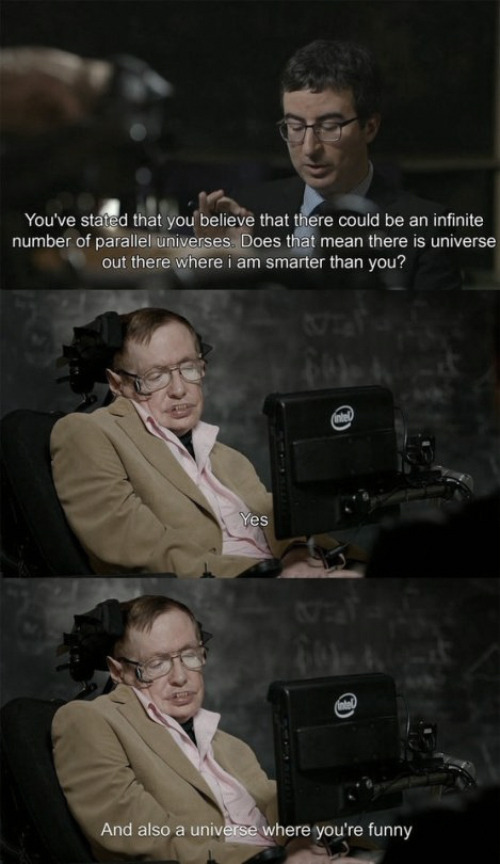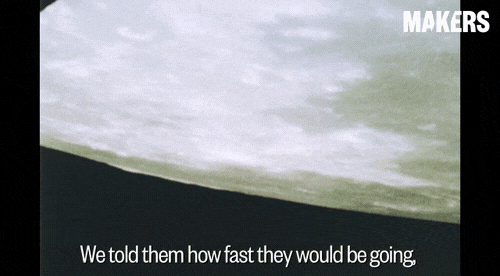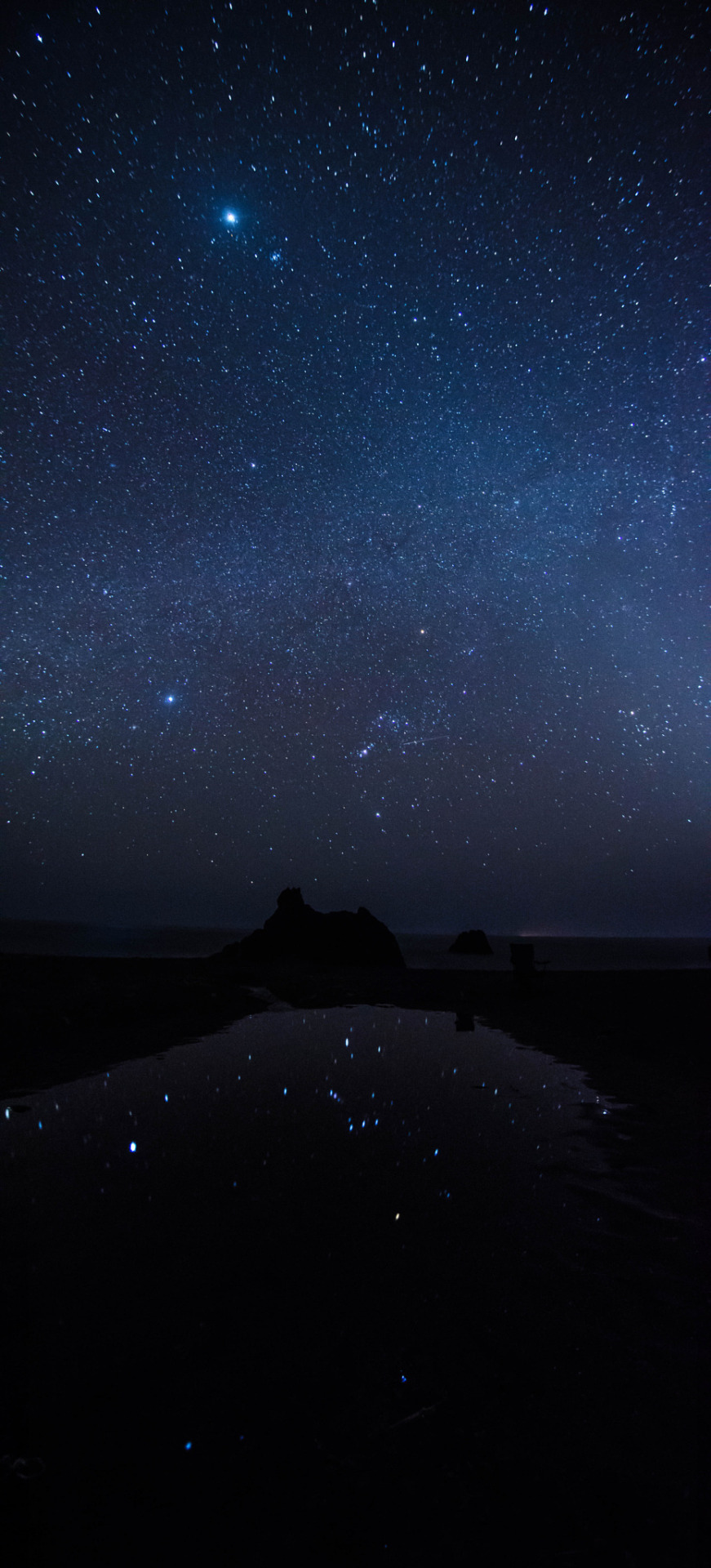Latest Posts by ship-happenss - Page 8

When (Neutron) Stars Collide : This illustration shows the hot, dense, expanding cloud of debris stripped from neutron stars just before they collided. (via NASA)
date a girl who is a home and an adventure all at once
Small Ways To Improve Your Life
make your bed to immediately make your room look more put together
water first, then coffee or tea
pray or meditate, even just for ten minutes, to set the tone for your day
browse the news headlines ( & read the articles that interest you when you’ve got time)
wear something you feel b o m b in
listen to music while doing your daily activities-commuting, cleaning, cooking, exercising
smile at at least two people
smile at YOURSELF
call or message someone you love
eat food that makes you feel radiant
make lists of things you need to accomplish for the day
stretch for 10 minutes
record in your phone the positive thoughts you have so you can remember them
carry water with you (always always always)
shut off your phone for an hour and have some ME time
take a hot shower or bath at the end of a stressful day
try to make plans to spend time with someone at least once a week
think about 3 things you are grateful for at the end of each day
do something calming, relaxing, and non-electronic 30 minutes before you sleep
sleep pants-less
Jupiter's Great Red Spot Getting Taller as it Shrinks
Discover how a team of our scientists has uncovered evidence that Jupiter’s Great Red Spot is growing taller as it gets smaller.
Though once big enough to swallow three Earths with room to spare, Jupiter’s Great Red Spot has been shrinking for a century and a half. Nobody is sure how long the storm will continue to contract or whether it will disappear altogether.

A new study suggests that it hasn’t all been downhill, though. The storm seems to have increased in area at least once along the way, and it’s growing taller as it gets smaller.

Observations of Jupiter date back centuries, but the first confirmed sighting of the Great Red Spot was in 1831. But until then, researchers aren’t certain whether earlier observers who saw a red spot on Jupiter were looking at the same storm.

Amy Simon, an expert in planetary atmospheres at our Goddard Space Flight Center in Greenbelt, Maryland, and her team traced the evolution of the Great Red Spot, analyzing its size, shape, color and drift rate. They also looked at the storm’s internal wind speeds, when that information was available from spacecraft.

This new study confirms that the storm has been decreasing in diameter overall since 1878 and is now big enough to accommodate just over one Earth at this point. Then again, the historical record indicates the area of the spot grew temporarily in the 1920s. Scientists aren’t sure why it grew for a bit.

Because the storm has been contracting, the researchers expected to find the already-powerful internal winds becoming even stronger, like an ice skater who spins faster as she pulls in her arms.

But that’s not what is happening. Instead of spinning faster, the storm appears to be forced to stretch up. It’s almost like clay being shaped on a potter’s wheel. As the wheel spins, an artist can transform a short, round lump into a tall, thin vase by pushing inward with his hands. The smaller he makes the base, the taller the vessel will grow.

The Great Red Spot’s color has been deepening, too, becoming is a more intense orange color since 2014. Researchers aren’t sure why that’s happening, but it’s possible that the chemicals coloring the storm are being carried higher into the atmosphere as the spot stretches up. At higher altitudes, the chemicals would be subjected to more UV radiation and would take on a deeper color.

In some ways, the mystery of the Great Red Spot only seems to deepen as the iconic storm gets smaller. Researchers don’t know whether the spot will shrink a bit more and then stabilize, or break apart completely.
For more information, go here/watch this:
For the full story, click HERE.
Make sure to follow us on Tumblr for your regular dose of space: http://nasa.tumblr.com.



“Growing up, I always assumed I would go into space. But I knew full well that people expected me to behave a certain way. I bucked the system. I don’t want mothers sayin’ ‘put that mud down, stop doing the because you’re going to ruin your dress.’ You get dirty sometimes. Who cares? You cannot do some of these things and keep your hair all nice.”—Mae Jemison
Today’s TechMAKER reached for the stars and then some. Mae Jemison saw the gender and racial discrimination in space exploration, but that didn’t stop her from becoming the very first African-American woman in space.
You can see our full interview with Mae Jemison over on MAKERS.

Rose-Colored Jupiter via NASA http://ift.tt/2FESHeN






“We are just an advanced breed of monkeys on a minor planet of a very average star. But we can understand the Universe. That makes us something very special.” ~ Stephen Hawking (1942 - 2018)
10 Ways to Celebrate Pi Day with Us on March 14
On March 14, we will join people across the U.S. as they celebrate an icon of nerd culture: the number pi.
So well known and beloved is pi, also written π or 3.14, that it has a national holiday named in its honor. And it’s not just for mathematicians and rocket scientists. National Pi Day is widely celebrated among students, teachers and science fans, too. Read on to find out what makes pi so special, how it’s used to explore space and how you can join the celebration with resources from our collection.

1—Remind me, what is pi?
Pi, also written π, is the Swiss Army knife of numbers. No matter how big or small a circle – from the size of our universe all the way down to an atom or smaller – the ratio of a circle’s circumference (the distance around it) to its diameter (the distance across it) is always equal to pi. Most commonly, pi is used to answer questions about anything circular or spherical, so it comes in handy especially when you’re dealing with space exploration.

2—How much pi do you need?
For simplicity, pi is often rounded to 3.14, but its digits go on forever and don’t appear to have any repeating patterns. While people have made it a challenge to memorize record-breaking digits of pi or create computer programs to calculate them, you really don’t need that many digits for most calculations – even at NASA. Here’s one of our engineers on how many decimals of pi you need.

3—Officially official.
Pi pops up in everything from rocket-science-level math to the stuff you learn in elementary school, so it’s gained a sort of cult following. On March 14 (or 3/14 in U.S. date format) in 1988, a physicist at the San Francisco Exploratorium held what is thought to be the first official Pi Day celebration, which smartly included the consumption of fruit pies. Math teachers quickly realized the potential benefits of teaching students about pi while they ate pie, and it all caught on so much that in 2009, the U.S. Congress officially declared March 14 National Pi Day. Here’s how to turn your celebration into a teachable moment.

4—Pi helps us explore space!
Space is full of circular and spherical features, and to explore them, engineers at NASA build spacecraft that make elliptical orbits and guzzle fuel from cylindrical fuel tanks, and measure distances on circular wheels. Beyond measurements and space travel, pi is used to find out what planets are made of and how deep alien oceans are, and to study newly discovered worlds. In other words, pi goes a long way at NASA.

5—Not just for rocket scientists.
No Pi Day is complete without a little problem solving. Even the math-averse will find something to love about this illustrated math challenge that features real questions scientists and engineers must answer to explore and study space – like how to determine the size of a distant planet you can’t actually see. Four new problems are added to the challenge each year and answers are released the day after Pi Day.

6—Teachers rejoice.
For teachers, the question is not whether to celebrate Pi Day, but how to celebrate it. (And how much pie is too much? Answer: The limit does not exist.) Luckily, our Education Office has an online catalog for teachers with all 20 of its “Pi in the Sky” math challenge questions for grades 4-12. Each lesson includes a description of the real-world science and engineering behind the problem, an illustrated handout and answer key, and a list of applicable Common Core Math and Next Generation Science Standards.

7—How Do We celebrate?
In a way, we celebrate Pi Day every day by using pi to explore space. But in our free time, we’ve been known to make and eat space-themed pies, too! Share your own nerdy celebrations with us here.

8—A pop-culture icon.
The fascination with pi, as well its popularity and accessibility have made it a go-to math reference in books, movies and television. Ellie, the protagonist in Carl Sagan’s book “Contact,” finds a hidden message from aliens in the digits of pi. In the original “Star Trek” series, Spock commanded an alien entity that had taken over the computer to compute pi to the last digit – an impossible task given that the digits of pi are infinite. And writers of “The Simpsons,” a show known for referencing math, created an episode in which Apu claims to know pi to 40,000 digits and proves it by stating that the 40,000th digit is 1.

9—A numbers game.
Calculating record digits of pi has been a pastime of mathematicians for millennia. Until the 1900s, these calculations were done by hand and reached records in the 500s. Once computers came onto the scene, that number jumped into the thousands, millions and now trillions. Scientist and pi enthusiast Peter Trueb holds the current record – 22,459,157,718,361 digits – which took his homemade computer 105 days of around-the-clock number crunching to achieve. The record for the other favorite pastime of pi enthusiasts, memorizing digits of pi, stands at 70,030.

10—Time to throw in the tau?
As passionate as people are about pi, there are some who believe things would be a whole lot better if we replaced pi with a number called tau, which is equal to 2π or 6.28. Because many formulas call for 2π, tau-enthusiasts say tau would provide a more elegant and efficient way to express those formulas. Every year on Pi Day, a small debate ensues. While we won’t take sides, we will say that pi is more widely used at NASA because it has applications far beyond geometry, where 2π is found most often. Perhaps most important, though, for pi- and pie-lovers alike is there’s no delicious homonym for tau.
Enjoy the full version of this article HERE.
Make sure to follow us on Tumblr for your regular dose of space: http://nasa.tumblr.com.
“Remember to look up at the stars and not down at your feet. Try to make sense of what you see and wonder about what makes the universe exist. Be curious. And however difficult life may seem, there is always something you can do and succeed at. It matters that you don’t just give up.”
Stephen Hawking

Stephen Hawking, January 8, 1942 - March 14, 2018
Born 300 years to the day after Galileo died
Died on Albert Einstein’s birthday
March 14: Annual Pi day (π)
“Life would be tragic if it weren’t funny” - S.H.
NT Moment #6
When your catchphrase is
“Not completely sure, but pretty sure I’m right”









Aesthetic Request: Female / Slytherin / ENTJ
“You believe this is a game, and you may be right. But if you think you can play it better than me, think again.”
For Anonymous
“I feel I’m both a failure and success at the same time and in varying ratios depending on the time of day.”
the types as | space phenomena
ISTP // cosmic ray high-energy radiation, mainly originating from outside the solar system. upon impact with the earth’s atmosphere, they can produce showers of secondary particles that sometimes reach the surface.
ESTP // solar flare a sudden flash of brightness observed near the sun’s surface. the flare ejects clouds of electrons, ions, and atoms through the corona of the sun into space.
ISTJ // solar eclipse an eclipse of the sun happens when the new moon moves between the sun and earth, blocking out the sun’s rays and casting a shadow on parts of earth.
ESTJ // the sun the star at the centre of our solar system. it is a nearly perfect sphere of hot plasma, and forms the most important source of energy for life on earth.
INFP // supermoon a full moon that coincides with the closest distance that the moon reaches to earth in its elliptic orbit, resulting in a larger-than-usual size of the lunar disk.
ENFP // galaxy a system of millions or billions of stars, together with gas and dust, held together by gravitational attraction.
INFJ // lunar eclipse an eclipse in which the moon appears darkened as it passes into the earth’s shadow. this can occur only when the sun, earth, and moon are aligned with the earth in the middle.
ENFJ // constellation a group of stars forming a recognisable pattern that is traditionally named after its apparent form or identified with a mythological figure.
ISFJ // saturn’s rings the rings of saturn are the most extensive planetary ring system of any planet in the solar system. although reflection from the rings increases saturn’s brightness, they are not visible from earth with unaided vision.
ESFJ // aurora an aurora is an incredible light show caused by collisions between electrically charged particles released from the sun that enter the earth’s atmosphere and collide with gases such as oxygen and nitrogen.
ISFP // winter solstice an astronomical phenomenon marking the day with the shortest period of daylight and the longest night of the year, when the sun’s daily maximum elevation in the sky is at its lowest.
ESFP // meteor shower a number of meteors that appear to radiate from one point in the sky at a particular date each year, due to the earth regularly passing through them at that position in its orbit.
INTP // nebula a cloud of gas and dust in outer space, visible in the night sky either as an indistinct bright patch or as a dark silhouette against other luminous matter.
ENTP // galactic wind composed of photons ejected from large stars, it is a powerful cosmic force that can push interstellar dust clouds into intergalactic space.
INTJ // black hole a black hole is a place in space where gravity pulls so much that even light can not get out. the gravity is so strong because matter has been squeezed into a tiny space. this can happen when a star is dying.
ENTJ // a supernova an astronomical event that occurs during the last stages of a massive star’s life, destruction is marked by one final titanic explosion. this causes the sudden appearance of a “new” bright star.
Awwww yiss
MBTI types as things in the sky
ENFJ: The rising sun on a summer morning.
ENFP: A constellation pointed out by friends star gazing.
ENTJ: A jet breaking the sound barrier.
ENTP: A super nova, releasing all of its star power.
ESFJ: A shooting star, holding on to a wish.
ESFP: A meteor shower passing over a summer camping party.
ESTJ: A satellite, precisely orbiting the earth.
ESTP: A distant planet waiting to be explored.
INFJ: The Northern Lights, dancing in the sky.
INFP: The Moon, both its illuminated side and its dark side.
INTJ: A cumulonimbus, majestically brewing from the storm inside.
INTP: A black hole, both mysterious and mesmerizing.
ISFJ: A rainbow after a spring shower.
ISFP: A colorful hot air balloon flying at dawn.
ISTJ: The International Space Station looking over an hurricane on planet earth.
ISTP: A parachute, deploying gracefully and falling freely.
them: what languages do you know?
me: visual basic, python and a bit of java
them:
me:
them:
me: ...oh you meant like speaking?



“They were going to the moon. I computed the path that would get you there. You determined where you were on Earth when you started out, and where the moon would be at a given time. We told them how fast they would be going, and the moon will be there by the time you got there.”—Katherine Johnson
We’re highlighting a couple of important TechMAKERS this week for Women’s History Month. These women have made incredible strides in STEM, despite the challenges they faced entering professional and academic fields that are overwhelmingly male-dominated.
It was only recently, with the release of Hidden Figures, that Katherine Johnson received the public recognition she deserved. There was not much visibility granted to a woman of color working at NASA in the 1960s.
Katherine made innumerable contributions to our space program, but the most important was being part of the team that put an American on the moon. She calculated the trajectory analysis for the mission because the computer they used was known to be faulty. We repeat: Katherine Johnson’s calculations were more trusted than that of NASA’s computers.
To see our full video profile of Katherine Johnson, head on over to MAKERS.

Starscape js

Jupiter’s vibrant bands of light belts and dark regions appear primed for their close-up during our Juno spacecraft’s 10th flyby on Feb. 7. This flyby was a gravity science positioned pass. During orbits that highlight gravity experiments, Juno is positioned toward Earth in a way that allows both transmitters to downlink data in real-time to one of the antennas of our Deep Space Network. All of Juno’s science instruments and the spacecraft’s JunoCam were in operation during the flyby, collecting data that is now being returned to Earth. The science behind this beautifully choreographed image will help us understand the origin and structure of the planet beneath those lush, swirling clouds.
Make sure to follow us on Tumblr for your regular dose of space: http://nasa.tumblr.com

Moonset Eclipse via NASA http://ift.tt/2FBeAY5
Don’t live your life...
Build it.


Happy National Techies Day!
October 3 is National Techies Day…and here at NASA we have quite a few people who get REALLY excited about technology. Without techies and the technology they develop, we wouldn’t be able to do the amazing things we do at NASA, or on Earth and in space.
Our Techies

We love our techies! The passionate engineers, researchers and scientists who work on our technology efforts enable us to make a difference in the world around us. They are responsible for developing the pioneering, new technologies and capabilities needed to achieve our current and future missions.
Research and technology development take place within our centers, in academia and industry, and leverage partnerships with other government agencies and international partners. We work to engage and inspire thousands of technologists and innovators creating a community of our best and brightest working on the nation’s toughest challenges.
Technology Drives Exploration

Our investments in technology development enable and advance space exploration. We are continually seeking to improve our ability to access and travel through space, land more mass in more locations, enable humans to live and explore in space and accelerate the pace of discovery.
Techie Technology
Advanced Manufacturing Technologies
When traveling to other planetary bodies, each and every pound of cargo matters. If we can reduce the weight by building tools once we arrive, that’s less weight we need to launch from Earth and carry through space.

Additive manufacturing is a way of printing three-dimensional (3-D) components from a digital model. If you think of a common office printer, it uses a 2-D file to print images and text on a sheet of paper. A 3-D printer uses a 3D file to deposit thin layers of material on top of each other, creating a 3-D product.

Thanks to techies, we’re already using this technology on the International Space Station to print wrenches and other tools. Our Additive Construction for Mobile Emplacement (ACME) project is investigating ways to build structures on planetary surfaces using resources available at a given site.

Discover more about how our techies are working with advanced manufacturing HERE.
Technology Demonstrations
Our techies are always innovating and developing new cutting-edge ideas. We test these ideas in extreme environments both here on Earth and in space.
Science missions in space require spacecraft propulsion systems that are high-performance, lightweight, compact and have a short development time. The Deep Space Engine project is looking to meet those needs. Our techies are currently testing a 100lbf (pound-force) thruster to see if this compact, lightweight, low-cost chemical propulsion system can operate at very low temperatures, which allows long duration storage capabilities.
Another technology in development is PUFFER, or the Pop-Up Flat Folding Explorer Robot…and it was inspired by origami! This robot’s lightweight design is capable of flattening itself, tucking in its wheels and crawling into places rovers can’t fit. PUFFER has been tested in a range of rugged terrains to explore areas that might be too risky for a full-fledged rover to go.

With our partners at Ball Aerospace & Technologies Corp., we’ve also collaborated on the Green Propellant Infusion Mission (GPIM), which will flight test a “green” alternative to the toxic propellant, hydrazine, in 2018. GPIM is the nation’s premier spacecraft demonstration of a new high-performance power and propulsion system — a more environmentally friendly fuel. This technology promises improved performance for future satellites and other space missions by providing for longer mission durations, increased payload mass and simplified pre-launch spacecraft processing, including safer handling and transfer of propellants.
Find out more about our technology demonstrations HERE.
Aircraft Technology
What if you could travel from London to New York in less than 3.5 hours? Our techies’ research into supersonic flight could make that a reality!

Currently, supersonic flight creates a disruptive, loud BOOM, but our goal is to instead create a soft “thump” so that flying at supersonic speeds could be permitted over land in the United States.
We’re conducting a series of flight tests to validate tools and models that will be used for the development of future quiet supersonic aircraft.

Did you know that with the ability to observe the location of an aircraft’s sonic booms, pilots can better keep the loud percussive sounds from disturbing communities on the ground? This display allows research pilots the ability to physically see their sonic footprint on a map as the boom occurs.
Learn more about our aircraft technology HERE.
Technology Spinoffs
Did you know that some of the technology used in the commercial world was originally developed for NASA? For example, when we were testing parachutes for our Orion spacecraft (which will carry humans into deep space), we needed to capture every millisecond in extreme detail. This would ensure engineers saw and could fix any issues. The problem was,there didn’t exist a camera in the world that could shoot at a high enough frame rate – and store it in the camera’s memory – all while adjusting instantly from complete darkness to full daylight and withstanding the space vacuum, space radiation and water immersion after landing.
Oh…and it had to be small, lightweight, and run on low power. Luckily, techies built exactly what we needed. All these improvements have now been incorporated into the camera which is being used in a variety of non-space industries…including car crash tests, where high resolution camera memory help engineers get the most out of testing to make the cars we drive safer.
Learn about more of our spinoff technologies HERE.
Join Our Techie Team
We’re always looking for passionate and innovative techies to join the NASA team. From student opportunities to open technology competitions, see below for a list of ways to get involved:
NASA Solve is a gateway for everyone to participate in our mission through challenges, prize competition, citizen science and more! Here are a few opportunities:
Vascular Tissue Challenge
The Vascular Tissue Challenge, a NASA Centennial Challenges competition, offers a $500,000 prize to be divided among the first three teams that successfully create thick, metabolically-functional human vascularized organ tissue in a controlled laboratory environment. More information HERE.
For open job opportunities at NASA, visit: https://nasajobs.nasa.gov.
For open internship opportunities at NASA, visit: https://www.nasa.gov/audience/forstudents/stu-intern-current-opps.html
Stay tuned in to the latest NASA techie news, by following @NASA_Technology on Twitter, NASA Technology on Facebook and visiting nasa.gov/technology.
Happy National Techies Day!
Make sure to follow us on Tumblr for your regular dose of space: http://nasa.tumblr.com.
Perk of being a NASA intern: beautiful phenomena like this are part of everyday life.
A Total Lunar Eclipse is Coming: 10 Things to Know
If you were captivated by August’s total solar eclipse, there’s another sky show to look forward to on Jan. 31: a total lunar eclipse!

Below are 10 things to know about this astronomical event, including where to see it, why it turns the Moon into a deep red color and more…
1. First things first. What’s the difference between solar and lunar eclipses? We’ve got the quick and easy explanation in this video:
2. Location, location, location. What you see will depend on where you are. The total lunar eclipse will favor the western U.S., Alaska, Hawaii, and British Columbia on Jan. 31. Australia and the Pacific Ocean are also well placed to see a major portion of the eclipse, if not all of it.

3. Color play. So, why does the Moon turn red during a lunar eclipse? Here’s your answer:
4. Scientists, stand by. What science can be done during a lunar eclipse? Find out HERE.
5. Show and tell. What would Earth look like from the Moon during a lunar eclipse? See for yourself with this artist’s concept HERE.
6. Ask me anything. Mark your calendars to learn more about the Moon during our our Reddit AMA happening Monday, Jan. 29, from 3-4 pm EST/12-1 pm PST.

7. Social cues. Make sure to follow @NASAMoon and @LRO_NASA for all of the latest Moon news leading up to the eclipse and beyond.
8. Watch year-round. Can’t get enough of observing the Moon? Make a DIY Moon Phases Calendar and Calculator that will keep all of the dates and times for the year’s moon phases right at your fingertips HERE.

Then, jot down notes and record your own illustrations of the Moon with a Moon observation journal, available to download and print from moon.nasa.gov.
9. Lesson learned. For educators, pique your students’ curiosities about the lunar eclipse with this Teachable Moment HERE.
10. Coming attraction. There will be one more lunar eclipse this year on July 27, 2018. But you might need your passport—it will only be visible from central Africa and central Asia. The next lunar eclipse that can be seen all over the U.S. will be on Jan. 21, 2019. It won’t be a blue moon, but it will be a supermoon.
Make sure to follow us on Tumblr for your regular dose of space: http://nasa.tumblr.com.

a reminder for those studying maths
you are NOT stupid, or lazy or anything like that if you are struggling
maths is notorious for being super difficult
when you are in your own bubble of seeing loads of people studying maths in your lectures or classes, it is so easy to put yourself down and convince yourself you are not good enough
the truth is, you are still wonderful and brilliant at maths to get as far as you have
everyone else outside your maths classes thinks you are super smart and super crazy for choosing to do maths
please don’t put yourself down, and remember that you are wonderful
maths takes passion, hard work and focus, and you can do it
Obsessed with these stickers.

Free Stickers for making to 60k followers! Send self addressed stamped envelope to: WHA 559 29th st, Richmond, CA 94804, USA. http://ift.tt/2dx7k4U
Every once and a while you get a glimpse of the person you could be. Grab that. Hold on to that. Work for it. Nothing is out of reach.
Perceivers: We’ll cross that bridge when we come to it.
Judgers: I am going to need to see the whole map and the number of bridges there are along with the time it will take to cross them and if we can find a more efficient way to cross them.















